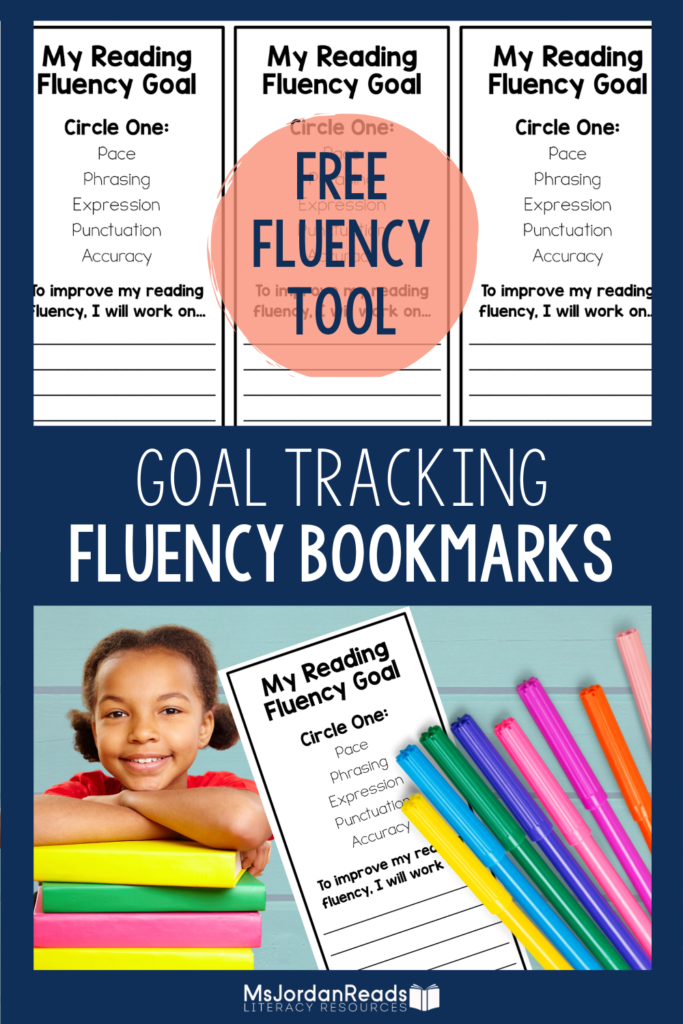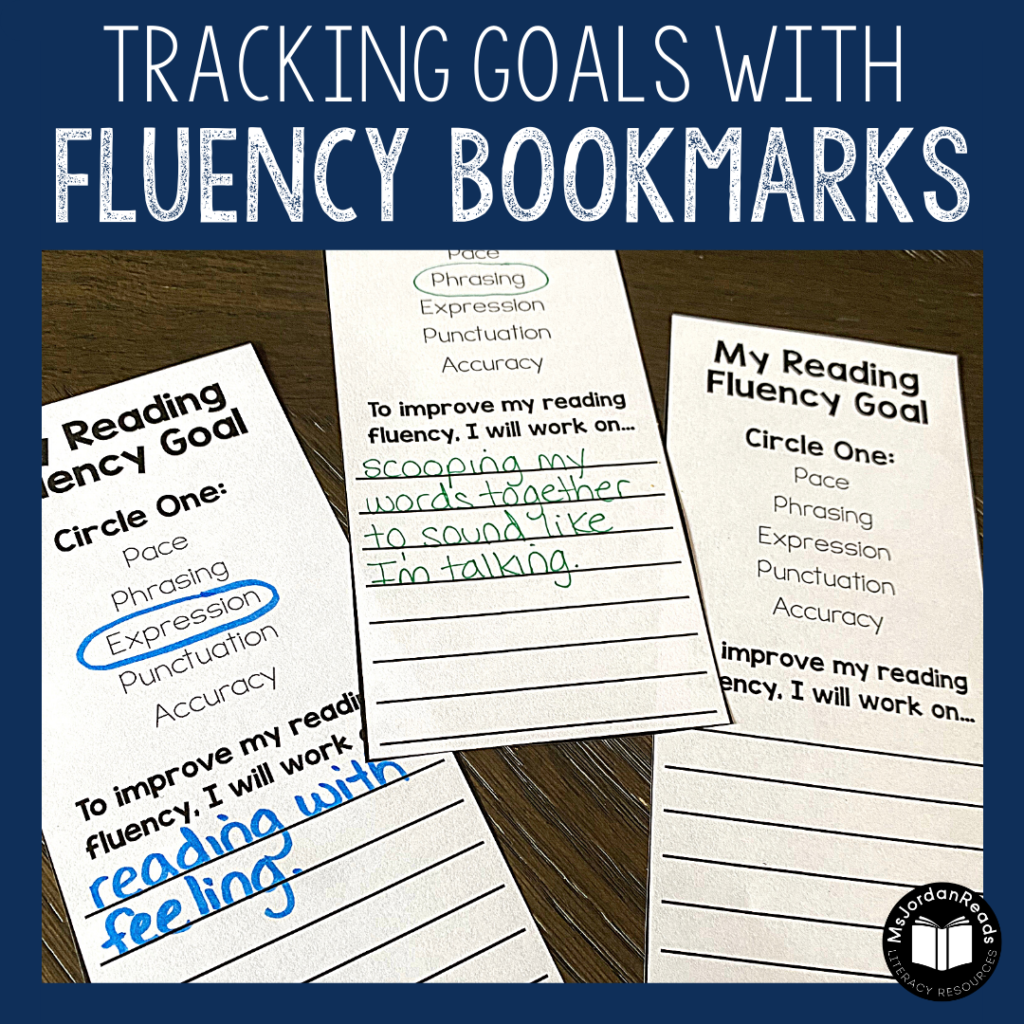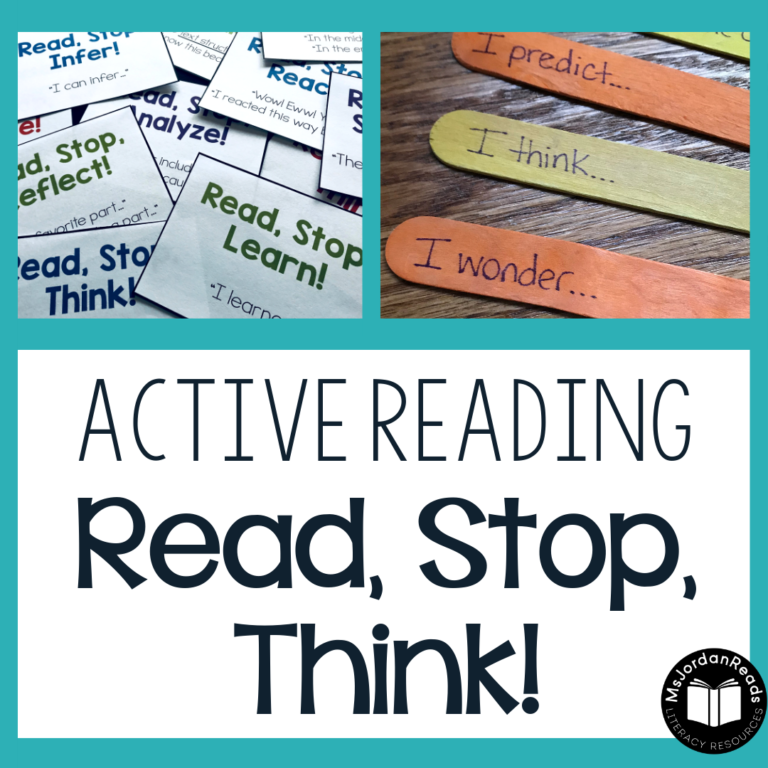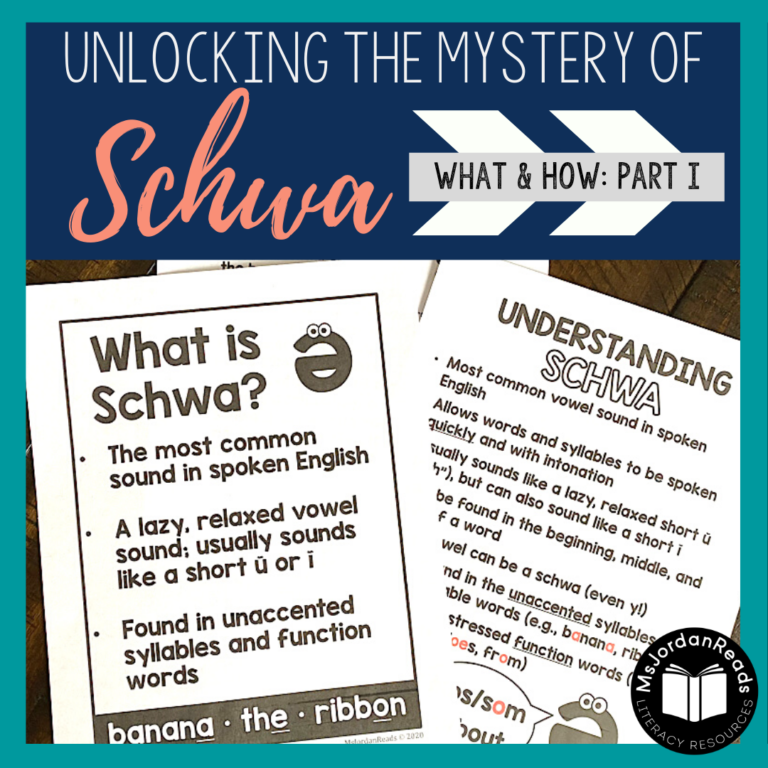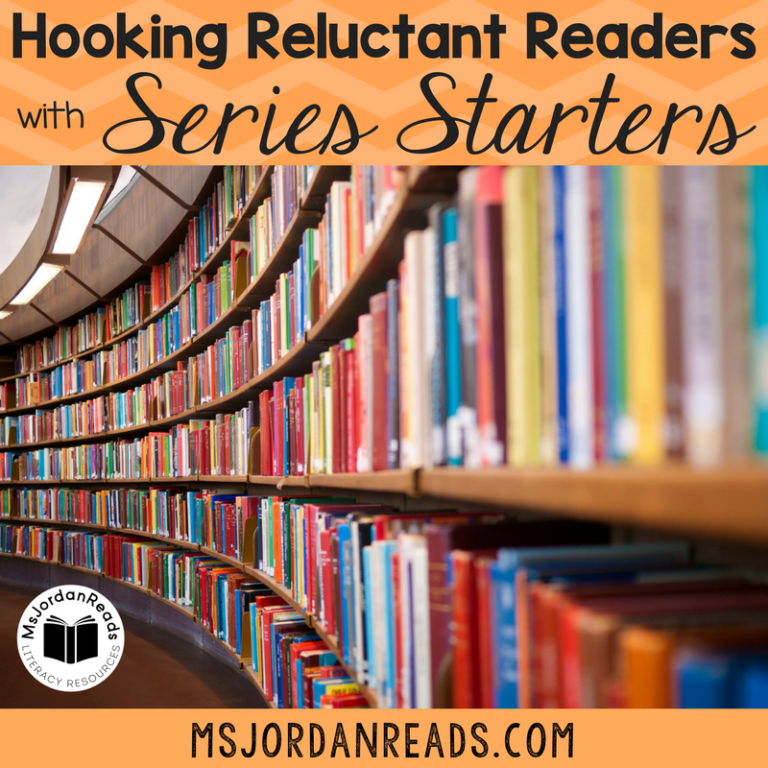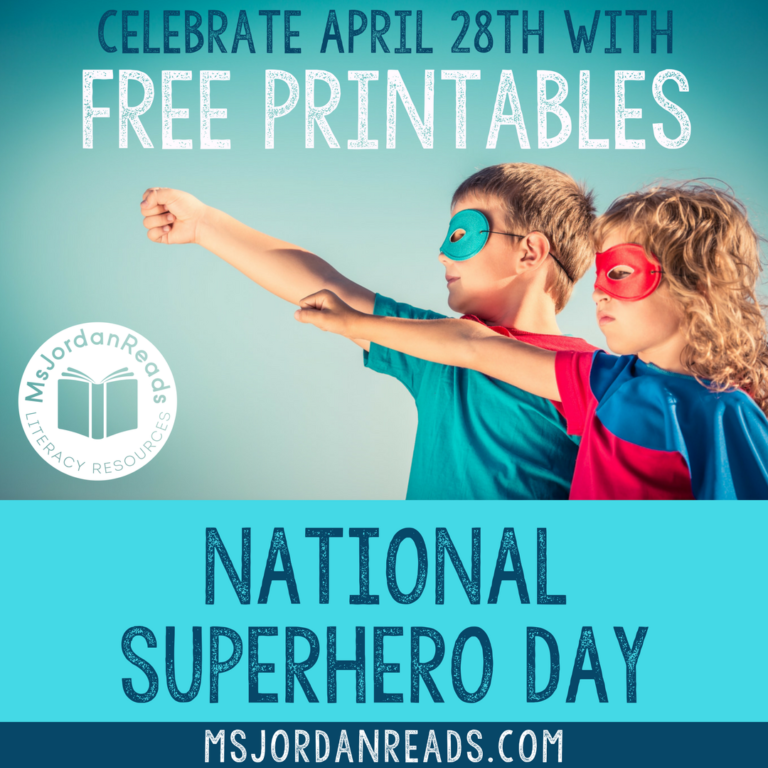How To Track Weekly Reading Fluency Goals with Fluency Bookmarks
Are you looking for a way to improve fluency skills and support students with their fluency goals?
Incorporating reading fluency goal setting and reflection as part of your daily or weekly routine is one way to do this. Setting goals helps your students build accountability and take ownership of the skills they are working on. It often motivates them to practice and provides a personal purpose for reading. Establishing reflection as a part of the learning cycle helps students look at their own reading and supports them in monitoring their own reading behaviors.
Keep reading to learn how to use simple fluency bookmarks to track reading fluency goals and monitor progress!
What are Fluency Bookmarks?
To help your students monitor and reflect on their fluency, consider using fluency bookmarks. These “print and go” bookmarks are easy to integrate into your classroom instruction and can help you integrate fluency interventions more effectively in your daily or weekly reading instruction.
To complete the fluency bookmarks, students will read a text and circle an area of fluency they need or want to work on. On the lines, they can set a specific fluency goal for themselves. This bookmark can be used to remind students of what they are supposed to be working on and can serve as an accountability measure for fluency practice.
3 Ways to Use Fluency Bookmarks
Whether you choose to use them with reading conferences, small group reading, or with the whole class (individually or with partners), fluency bookmarks are a simple, yet effective, way to keep track of their fluency goals. There are many ways you can use this tool to track your students’ reading fluency goals.
1:1 Reading Conferences or Small Groups
Fluency bookmarks are perfect for 1:1 conferences or to use with your small groups. Students can reflect on their oral reading fluency at the end of a specific lesson, or they can reflect on their fluency each week as part of their weekly routine throughout the year. Students can set goals on Mondays and reflect on their fluency for the week on Fridays. If reading fluency is a bigger target for your students, they could even look at their bookmarks and reflect daily.
They could after each 1:1 or small group session, and set achievable goals for themselves. Since reading fluency is a skill that can be worked on in conjunction with other skills, even if the lesson target is unrelated to fluency (i.e., retelling, asking questions, key word summaries, making connections, non-fiction text structures, etc.). The bookmark can be used to reflect and set fluency goals throughout the year, especially since fluency is an ongoing reading skill that students can develop and improve. The bookmark can be used during small groups to remind the students of the goals they are working on, even if the focus is on a completely different skill.
Fluency Coaching Using Cold & Hot Reads
Use fluency bookmarks as part of your fluency coaching program. With cold and hot reads, you can have students complete repeated readings of independent level passages and reflect on their fluency. Each week, students can set a goal for themselves and record it on the fluency bookmark. They can then use this bookmark during independent reading time or with books they read at home.
Partner Fluency
If you’re looking for a fun way to introduce fluency practice or to encourage ongoing fluency practice, consider partner fluency activities. Pick a fun partner poem, readers theater, or a reading passage.
In my experience, students make great coaches and they love taking on the coach role to help other students pinpoint specific reading goals. (I mean, how quick are students able to correct YOU or tell you when you’re not doing something perfect?)
Students love lifting each other up and helping each other out. This may require intentional pairing of partners and lots of modeling to provide students with a structure for HOW to coach. They would also need suggestions and practice with choosing KIND words to help with their constructive feedback. Perhaps a menu of canned comments would be helpful at first to ensure positive word choice and help students with choosing appropriate goals that match their observations and peer “critiques”. These predetermined observations and goals would be similar to canned comments for report cards that you may have for yourself.
Tips & Suggestions for Using Fluency Bookmarks
- Set achievable goals that students can reflect upon and feel success with. If the students’ goals are too far of a reach, students may start to feel frustration and could lose confidence in their ability to achieve their goals.
- Remind students to keep a growth mindset for reading. Be sure your students understand “the power of yet” and that even if they couldn’t reach their goal this week, it just means they aren’t able to do it yet. It’s okay to have the same goal a few weeks in a row! (Read more about how I use a growth mindset with my reading groups here!)
- If the components of reading fluency are too vague for students, you may need to provide more specific fluency goals. Create a “menu” of smaller skills students can work on within the larger area of fluency. Some examples could be:
- “I will read 55 words per minute this week” (increasing it by only a few words at a time!)
- “I will improve my accuracy by 5%”
- “I will pay attention to punctuation on at least ONE page of my text”
- “I will try to change my voice for character dialogue within a text to practice my expression”
- “I will scoop my words into 2-3 word phrases for at least one page”
- If students are having a hard time reflecting, consider recording their reading before/after or using auditory feedback phones (aka whisper phones). This helps them focus in on their oral reading fluency and hopefully develop awareness of what others hear when they read.
- For students who aren’t able to reach their specific goals, be sure to include extra opportunities for repeated reading or fluency practice. (You can learn about more ideas for improving fluency here!)
Download a FREE Fluency Bookmark Template
Are you interested in trying out fluency bookmarks with your students? Grab a free PDF download by completing the form below! (If you’re already a subscriber, you can access this resource from the FREE resource library.)

